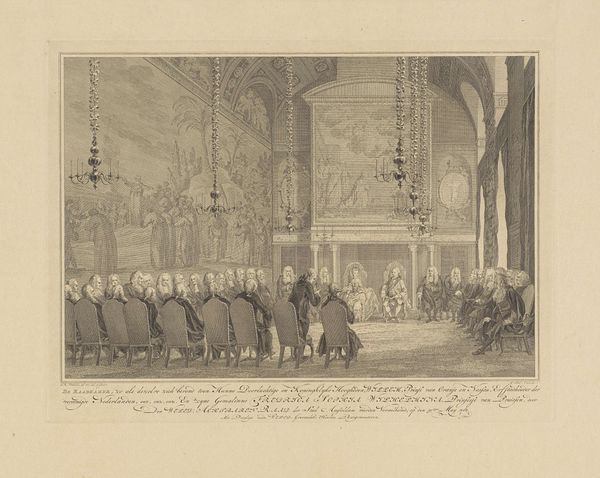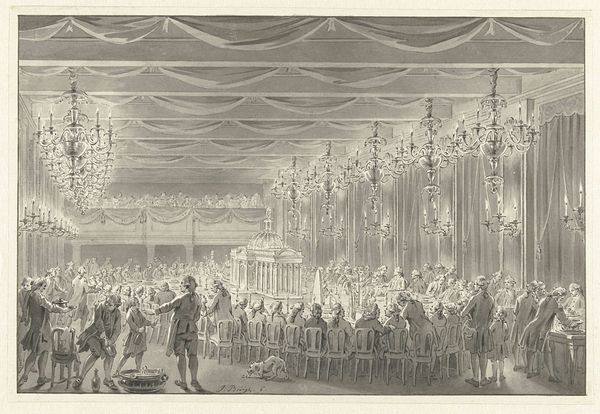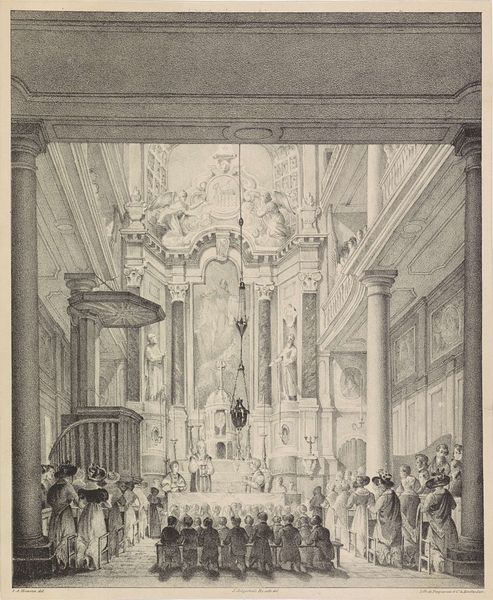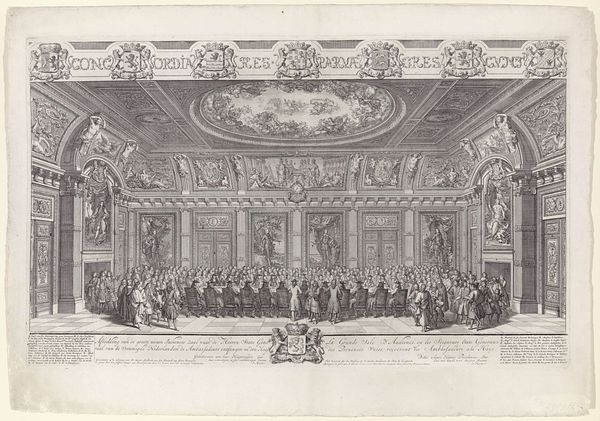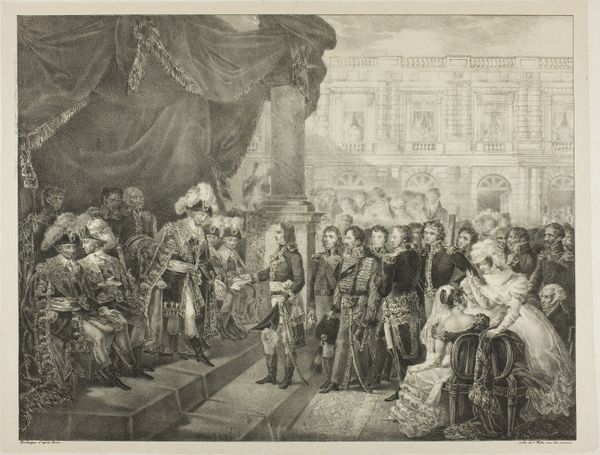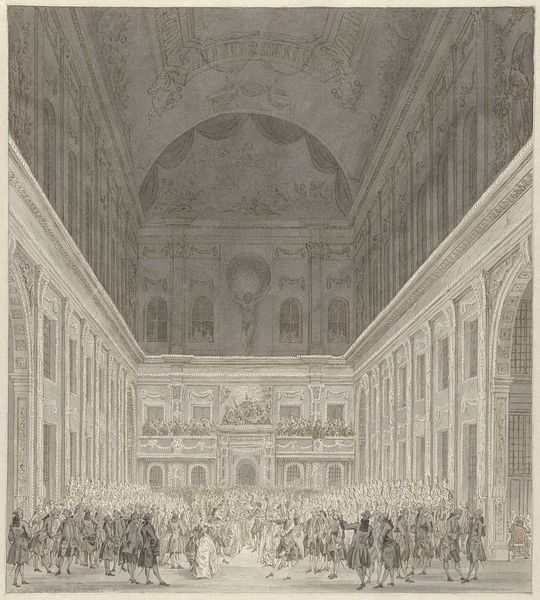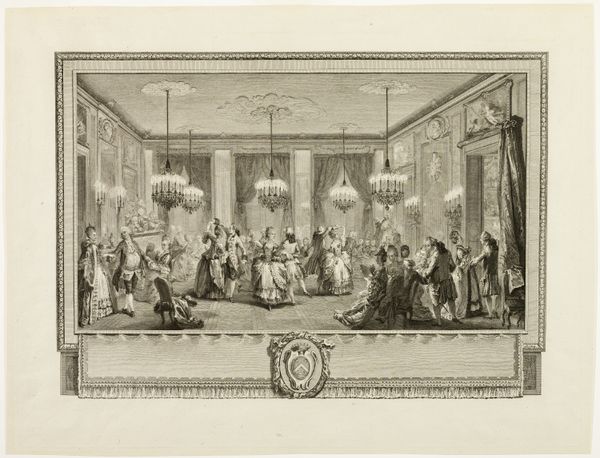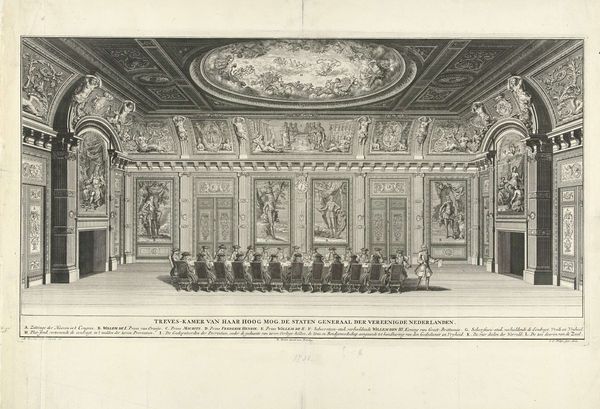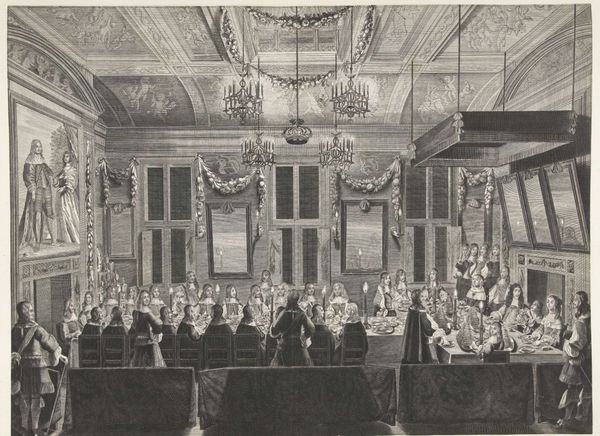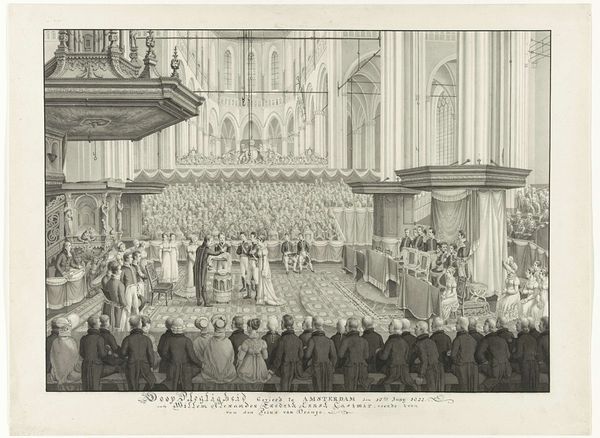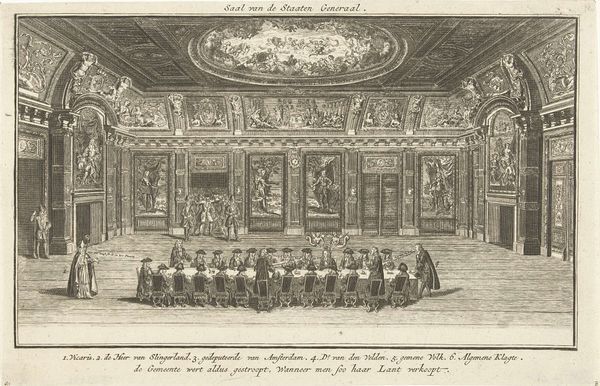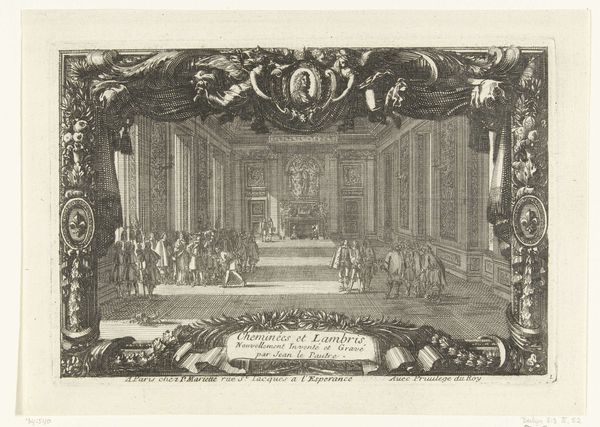
Ontvangst van Prins Willem V en Wilhelmina van Pruisen in de Raadzaal van het Stadhuis van Amsterdam Possibly 1768 - 1772
0:00
0:00
drawing, etching, ink, architecture
#
portrait
#
drawing
#
etching
#
etching
#
ink
#
genre-painting
#
history-painting
#
architecture
Dimensions: height 263 mm, width 385 mm
Copyright: Rijks Museum: Open Domain
Curator: This drawing by Reinier Vinkeles, titled "Reception of Prince William V and Wilhelmina of Prussia in the Council Chamber of Amsterdam," likely completed between 1768 and 1772, provides a fascinating window into the late 18th century. Editor: It does. My initial reading suggests a calculated staging of power. The sheer repetition of figures, framed within the cold, monumental architecture, contributes to this mood. Curator: Precisely. Vinkeles, working primarily in etching and drawing, excels in rendering the textures and architectural details of the Raadzaal. The light and shadow, rendered with ink on paper, create a captivating atmosphere. How do you interpret its spatial design? Editor: It's certainly intriguing. There is the formal, frontal presentation that mirrors classic royal portraiture traditions, with subtle manipulations. The viewer is kept at a distance, positioned low and back, almost as though watching from a hidden corner. The long shadows that you pointed out seem like symbols for their long lasting powerful impression. Curator: The reception depicted here reflects the political tensions of the era. Willem V's power was contested, and Amsterdam, a powerful city within the Dutch Republic, played a key role. I am curious, the way you’re mentioning the frontal presentation - what exactly do you find interesting about the visual design? Editor: Note how the rigid structure and ornamentation throughout the chamber, together with the symmetrical arrangement of the figures emphasize stability, perhaps to suppress political discord in a subtle but tangible manner. These are powerful strategies for reinforcing societal stability and power dynamics, that subtly invite deeper contemplation of power, beyond immediate observations. Curator: An interesting point! Now I'm re-evaluating the seemingly neutral space— it is imbued with meaning through its composition. Thank you for highlighting these design aspects; it is imperative that we delve into the visual politics embedded within this artwork. Editor: Likewise! Understanding these subtle visual and social undercurrents is fundamental to deciphering historical artistic intention, particularly when decoding imagery representing authority figures.
Comments
No comments
Be the first to comment and join the conversation on the ultimate creative platform.
